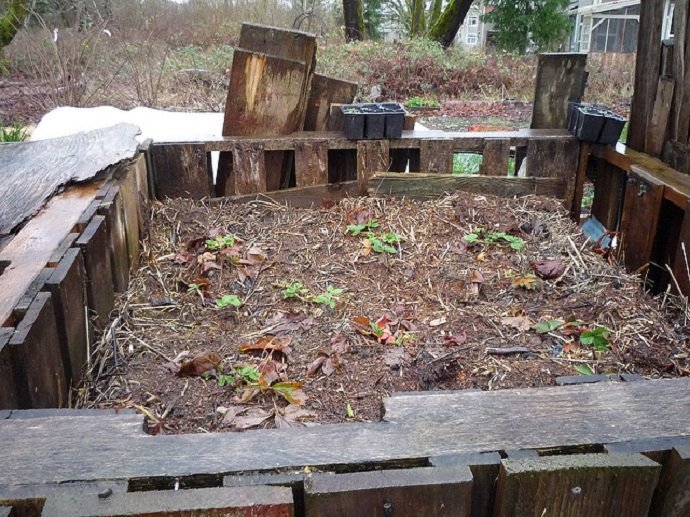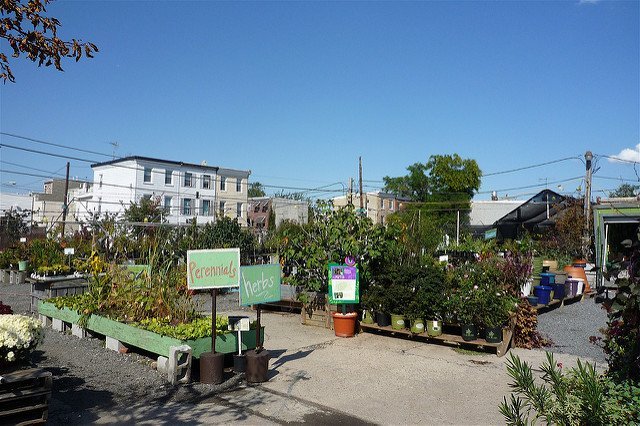
Great, Free (or Cheap) Gardening Resources for the Small-Time Farmer
Much of the modern food movement, the one that is shedding large-scale monocultures and promoting local self-sufficiency, is predicated on small farms. Our suburban lawns are being transformed into zones of food production. Our urban balconies become miniature ecosystems, complete with animal habitats and edible gardens. Vacant lots and public parks are converted into food forests and/or allotments.

At the beginning of this transition, we are relearning some skills—seed-saving, organic growing, companion planting—from the past, and more importantly, we are innovating with what the contemporary landscape has given us. We recognize rooftops as perfectly useable spaces for cultivation. We fearlessly grow container herb gardens on our windowsills. In a largely urban population, we recognize the need to further utilize the small spaces we’ve left ourselves.
But, there is something lacking. What well-designed big farms have that small farms don’t is an abundance of resources. There are animals to produce manure, trees to be thinned and pruned, fields for harvesting hay and straw, and on it goes. Luckily, with the right mindset, that of using our collective waste for productive cycles, plenty of outside resources are available to the urban/suburban farmer for free or virtually so.
In the Neighborhood
For every lawn that gets mown, every hedge that needs trimming, and every kitchen that is used, there lies an abundance of resources for gardening. Whether it is for making compost, sheet-mulching, feeding worms, filling hugelkultur, or borrowing tools, the neighbor’s place—let’s pretend we are already friends or, if not, make the effort to become so—can provide a wealth of resources for the urban garden. Why not trade a couple of hours of lawn-care labor in exchange for the use of the lawn-care “waste”? The neighbors might even equate to more land that can be cultivated, as often people would love to have a garden but just don’t have time, so they might be keen to share their yard (and harvests) with someone who will turn it (or parts o it) into an edible lawn.

At the Eateries
Restaurants are a great source of resources. Generally, they’ll have an abundance of nitrogen-rich materials, including kitchen scraps and spent coffee grounds, as well as a huge amount of carbon cardboard and newspapers. They also have industrial-sized containers, such as cans and buckets, that can be used as plant pots. Coffee shops and breakfast cafes are a great place to visit and possibly pick up a wealth of resources for free. With a little planning, it could be possible to set up a sustainable waste system with them, and it’ll save them the cost of having to have it all taken away (into a destructive system) while providing gardening materials (a productive system). Plus, they’ll get to promote their greenness.
From Lawn Care Businesses
Tree-trimming and lawn care businesses deal with massive quantities of fresh cut grass, either a good nitrogen for compost or potentially dried for mulch, as well as literally truckloads of woody material that can be used to build hugelkultur gardens or rough-cut trellises, compost bins, raised beds, mulch (bark , shavings, sawdust), or even organic pathways. With the right amount of charm and hospitality, suitors can even sometimes convince them to deliver the material for free. Suddenly, many of the benefits of a forest are available without having to own acres of land or even a chainsaw.
On the Construction Site
Where there is lumber (Don’t forget sawmills and carpentry companies), there are lumber scraps, including off-cuts, wood shavings, and sawdust, and where people are building things, at least the way it has be done for the last century or more, there is an abundance of trash to be repurposed. Aside from wood, there is the possibility of cardboard boxes, old windows, discarded fasteners (nails, screws, hinges, braces), pieces of pipe, buckets, palletes, and who knows. A little creativity could convert the contents of construction dumpster into, say, a greenhouse or gardening boxes.

Around the Stables
Sure, the typical suburban farmer isn’t going to have a horse or cow in the backyard, but a little further afield or at local riding stables, in staggering abundance, are piles of manure-d hay and straw from bedding, as well as aged and fresh manure itself. Often, for a fella or philly with a pickup truck (or other means of moving it), these are free for the taking. If they aren’t, again, exchanging an hour or two of labor, cleaning stalls here and there in exchange for keeping what you clean, isn’t the worst way to gain access to the animal elements that more complete farms have. In fact, it just makes good sense that we use these resources.
Behind the Market Stalls
Locally farmers’ markets, besides being the next best place (other than home) to find good food, are great resources for the small-scale farmer. Many stalls will have an abundance of compostable materials that they may be willing to part with for the benefit of a budding farmer. Even better, though, since we’ve already gained compost and soil-building material elsewhere, farmers’ markets are great place for growing advice, introduction to new varieties of produce, artisanal ideas for DIY food production, and the acquisition of seeds.
About Anywhere
As thrifty and fearless cultivation becomes more ingrained, so do the eyes for finding resources. There are clippings to be taken from gardens about town, or seeds to be gathered from our own pantries. There are disused pallets, garage sales, and seed banks. Dumpsters often have surprise elements poking out of or sitting right next to them. As small-scale farmers in the modern world, it is to our benefit (and perhaps our responsibility) to take the useful “waste products” available in our environment and put them into productive cycles. This is how we can get the vast amount materials we need without further burdening the planet for them and, in fact, providing relief from the constant creation of garbage.

Feature Image: Rooftop Allotment (Courtesy of David Barrie)












